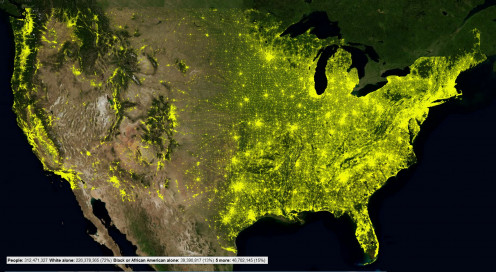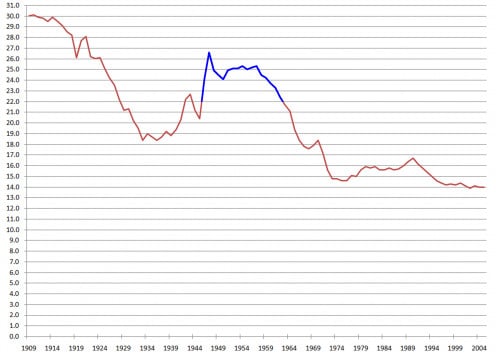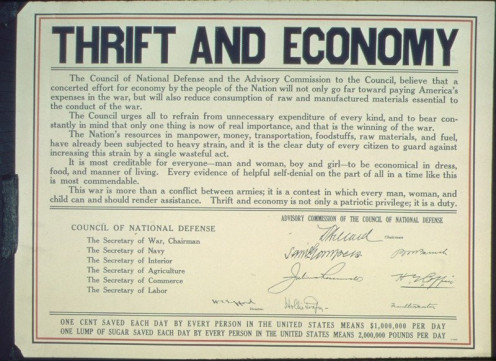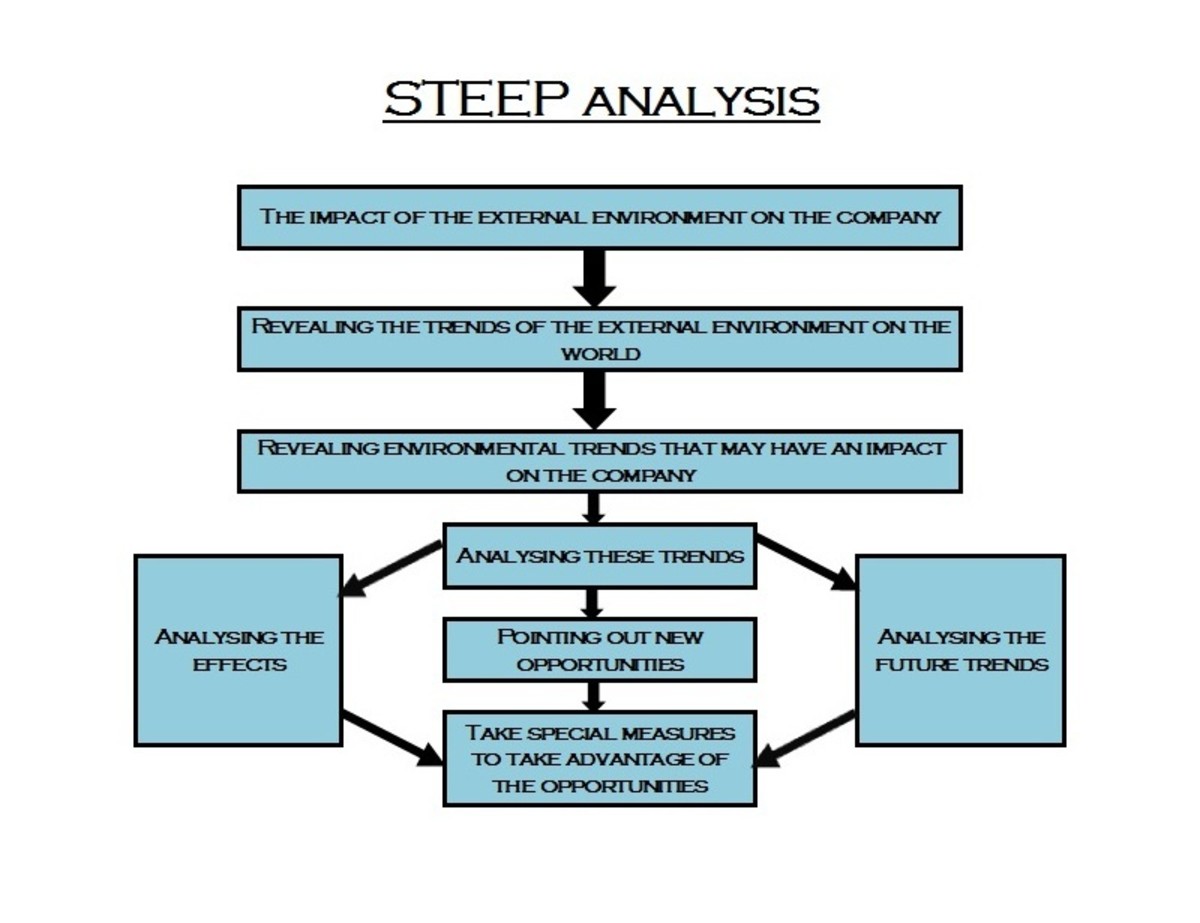Basics of the "Macro" Marketing Environment

There are "micro" and "macro" influences and forces that can affect marketing's ability to build and to maintain successful relationships with current and prospective customers. Micro-level influences can be seen as those with the potential to exert a more "immediate" effect on a company's marketing program, while macro-level influences usually have less immediate, potentially, more "long-term" consequences. Many companies view the "macro" marketing environment as something "uncontrollable," to which they can only react and adapt. Others take a more "proactive" stance, attempting to use to their advantage what they know or can learn about the macro environment.
In the Hub, Basics of the "Micro" Marketing Environment, I examined elements of marketing's "micro" environment. The article presented six major areas of more immediate concern for marketing management due to their potential to affect a company's marketing planning and decision-making.
In this Hub, I'm looking at marketing's "macro" environment. It is important for marketing management to consider macro-level environmental components because these larger societal forces exert impact upon the micro environment. With marketing considerations in mind, this Hub will examine:
- Demographics
- Economics
- Natural/Environmental Concerns
- Technological Innovations
- Political/legal Considerations
- Socio-cultural Influences

The Demographic Environment
Demographic considerations are important for marketers to understand. Demography is the study of human populations in terms of size, density, location, age, gender, race, occupation, and other statistics. Changes in the world's demographic environments have major implications for business. The single most important demographic trend in the United States is the changing age structure of the population.
Baby Boomers
The post-World War II "baby boom" produced 76 million children born between 1946 and 1964. The "baby boomers" were always one of the most powerful forces shaping the marketing environment as they grew up, and they still are now, as they are aging. Today’s baby boomers account for about 26 percent of the population (according to Pewresearch.org), but, in their heyday, earned more than half of all personal income. Baby boomers cross all walks of life, creating a diverse set of target segments for businesses. Boomers span a 20-year age range, and almost 25 percent of them were born to people within racial or ethnic minority groups.

Generation X
The baby boom was followed by a “birth dearth,” creating another generation of 49 million people born between 1964 and 1976. This group was labeled Generation X, because, lying in the shadow of the boomers, the group lacked obvious distinguishing characteristics. This generation, as a group, has been defined as much by their shared experiences as by their age. Increasing divorce rates and higher employment for their mothers made them the first generation of "latchkey" kids. They developed a more cautious economic outlook, are concerned and care about the environment, and respond favorably to socially responsible companies. GenXers are also viewed as a skeptical bunch, cynical of frivolous marketing pitches that promise easy success.
Generation Y
Generation Y is also called "echo boomers." This is the generation born between 1977 and 1999, and they are the children of the baby boomers. There are seventy-seven million of them, and they dwarf the GenXers. In fact, they are equal in size to the original baby boomer segment, but are only about one-fourth of the total U.S. population. In 1970, baby boomers represented half of the U.S. population.
The echo boom created large teen and young adult markets. The nation’s teens spend $175 billion a year and influence another $30 billion in family spending. The biggest distinguishing characteristic between Gen Y and earlier generations is the Millennials’ familiarity with and dependence on technology.

Must marketers create separate products and marketing programs for each generation? Some experts caution that each generation is different and deserves special consideration since each spans decades of time and comprise many socioeconomic levels. Others warn that marketers have to be careful about turning off/alienating one generation each time they craft a product or message that is developed to appeal effectively to another.
Trends tracking is also something marketers must examine/consider within generations, such as the modern work option of “telecommuting” becoming more widespread, an increasingly "white collar" workforce, and the influence of e-books and magazines on publishing and technology trends, among many others.
Other demographic considerations include:
- Trends related to the traditional household
- Percent married couples
- Couples choosing cohabitation without marrying
- People marrying later
- Couples and singles choosing to have children without marrying
- Number of working women
- Periods of great migratory movements between and with countries
- U.S. population shift continuing to trend toward Sunbelt states
- Population continuing to move from rural to metropolitan areas
- Shift in where people work
- U.S. population better educated than ever before
- U.S. population racial and ethnic diversity

The Economic Environment
Factors within the national and international economic environment can have a resounding effect on consumer purchasing power and spending patterns. Major U. S. economic trends include:
- Personal consumption and personal debt, both of which have risen
- Effects of credit trends and interest rates on buying
- Unemployment and recession forcing consumers to be more careful as shoppers
- Effects/expectations related to value marketing and value-conscious consumers
- Income distribution skewed positively toward the rich; prosperity not evenly distributed among classes
An important factor affecting the short- and long-term economic outlook in the U.S. is prolonged periods of unemployment. Unemployment can exert marked and far-reaching effects on any economy. When millions of people are unemployed, there is less money for spending that can lift the economy. When spending is down, sales taxes will be down as well, further handicapping the economic outlook. Unemployed people, also, tend to cut out buying items they simply want while cutting down on things they need to survive.
Consumers' spending less money leads to businesses having to cut prices, which lessens revenue, leading to more unemployment--at best, and to merchants going out of business--at worst. In addition, the unemployed may have to use or even drain retirement savings. When income tax revenue is down, the government may have to borrow money, or cut back on spending on needed programs. At the same time, more is being spent to pay unemployment benefits, and to provide food and medicaid assistance.
The social costs to individuals include erosion of work skills at the same time that society is being deprived of a lot of good talent. Uninsured individuals also face worsening physical health, leading to shortened life spans.

The Natural Environment
Concerns about the natural environment affect business decision-making. These include decisions about the natural resources that are needed as inputs by marketers, and those that are affected by marketing activities.
Many of the concerns related to the natural environment ultimately will lead to cost increases for consumers. These include such things as: Raw materials increasing in scarcity, problems associated with waste materials disposal, and pollution concerns leading to problems finding locations for industrial plants that might affect the environment negatively. Decisions companies make can influence public opinion, and public opinion can weigh heavily on marketing decision-making. Understanding the impact of the natural environment on consumers is important because consumers are more alert and aware than ever before about environmental issues.
Interest in environmental concerns has grown steadily over past recent decades, and marketers are realizing, more than ever before, the need to remain aware of trends in the natural environment. Shortages in raw materials, increased pollution, and increased government intervention in natural resource management are all factors related to the natural environment that consumers are aware of, and, therefore, marketers should continue to monitor and pay attention to these and other such concerns.

The Technological Environment
The technological environment is perhaps the most dramatic force now shaping our destiny. Technological innovations change the way consumers communicate with each other, as well as the way marketers communicate with consumers.
New technologies create new markets and opportunities, but, every new technology replaces on older technology. And, as technology creates new industries, old industries sometimes disappear. Marketers must remain alert and aware of trends while watching the technological environment closely, doing their best to predict impact/influences on consumers.
The Political/Legal Environment
The political environment consists of laws, government agencies, and pressure groups with the power to influence or limit the behavior of individuals and organizations in a given society. Changes within the political and legal arena can affect business. Therefore, it is important for marketers to understand public policy and legislation, and the implications presented for business and marketing.
Legislation can encourage or discourage competition, and it can ensure (or not) fair markets for goods and services. Political corruption can influence marketing success or failure. Over the years, legislation affecting business around the world has increased steadily. Companies must be aware of changes in the political and legal environment so that decision-making can respond to the current political climate, and so that the firm can make any needed adjustments in corporate marketing policy.
In addition to legislation, marketers must understand that many consumer groups are now watching the political and legal landscape as it relates to business, to ensure that business is government by social codes and rules of professional ethics. To demonstrate their social responsibility and build more positive images, many companies are now linking themselves to worthwhile causes.

The Socio-Cultural Environment
The socio-cultural environment is made up of institutions and other forces that affect a society’s basic values, attitudes, perceptions, preferences, and behaviors. People grow up in a particular society that shapes their basic beliefs and values, helping to establish beliefs and expectations related to how people should behave.
Marketers often segment consumer "target audiences" for products and services based on cultural values. The overriding beliefs and attitudes of a society can change over a period of time due to different environmental factors. Some of these factors might include such things as changing ethnic/racial "mix" of the population, more widespread acceptance and occurrence of single-parent families, and more consumers beginning to desire simpler, more meaningful lives.
______________________________________________________________
Businesses must be able to identify important trends that are driven by the macro environment. They must understand the need to embrace widespread environmental changes and learn how to use them to their advantage.
At the same time, marketing management must know and understand macro-level environmental issues and concerns as well, to be able to use them to predict (with a great degree of accuracy) their possible immediate and long-term impact on consumers' buyer behavior.
This Hub's Author
Dr. Middlebrook is a former college professor of marketing and mass communications. She spent nearly twenty years behind the desk teaching courses in advertising, marketing, public relations, and journalism. In addition, she worked, for many years, as a consultant and as an employee in corporate marketing and communications.
© 2012 Sallie B Middlebrook PhD








